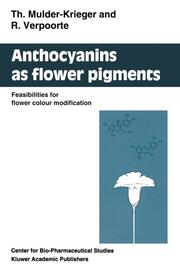Detailansicht
Anthocyanins as Flower Pigments
Feasibilities for Flower Colour Modification
ISBN/EAN: 9780792324652
Umbreit-Nr.: 1439813
Sprache:
Englisch
Umfang: 164 S., 2 s/w Illustr., 164 p. 2 illus.
Format in cm:
Einband:
kartoniertes Buch
Erschienen am 31.01.1994


